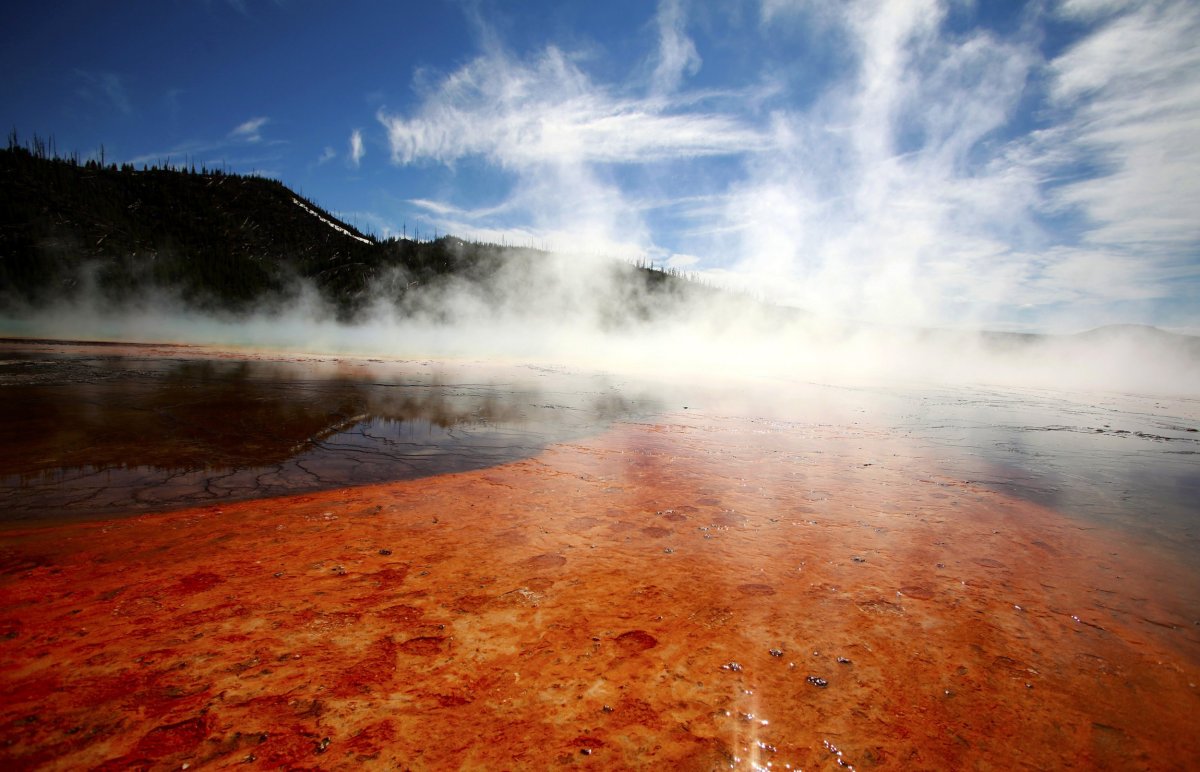Let's get one thing out of the way: The supervolcano below Yellowstone is not going to erupt anytime soon; neither are any of the other similar systems that geologists have identified around the world. The sort of cataclysmic eruption that has earned these volcanoes their designation come with tons of warning signs that can't possibly be missed.
Scientists already knew that, but there's still a lot they would like to learn about how these huge eruptions occur—including what factors might make a supervolcano eruption more likely to occur a little sooner rather than later. A new study published in the journal Geophysical Research Letters tackles the connection between an eruption and what sort of tectonic forces are acting in the area.
The authors found that when supervolcanoes are located in regions being pulled apart by plate tectonics, eruptions likely happen a little more frequently than under different tectonic conditions. That's not surprising, according to Michael Poland, the scientist in charge of the U.S. Geological Survey's Yellowstone Volcano Observatory at America's most famous supervolcano who wasn't involved with the new research.
"When you're pulling the crust apart and you're pumping it full of magma, you'd expect that it would probably fail on shorter timescales," Poland told Newsweek.
Related: Yellowstone's supervolcano may be fueled by 200-mile-wide plume of hot rock
First author Haley Cabaniss, a doctoral student in geology at the University of Illinois, said things can start happening fast at supervolcanoes in these regions. Well, geologically fast, anyway.
Traditionally, scientists have thought that these volcanoes slowly and consistently gathered more and more molten rock until the pressure got to be too much. But recently, Cabaniss said, scientists are realizing it's likely that much of the period between eruptions—which can last as long as a million years—is quiet.
For 990,000 years, perhaps, nothing is happening, then the last 10,000 years may see enough magma activity paired with tectonic stress to cause an eruption. "You can trigger an eruption very quickly," Cabaniss said, with the action packed into just centuries or millennia. That's quite rapid on geological timescales, although still much beyond a human lifetime.
The study is based on a model of how the rock walls of a magma chamber respond to three different situations: when the tectonic plate it is located in is being stretched across Earth's surface, when the plate is being squished, and when it is left more or less stable and experiencing little stress.
Cabaniss and her co-authors compared those results with what scientists know about Taupo, the supervolcano that lies beneath the heart of the northern island of New Zealand. Plate tectonics around Taupo are nearly exclusively stretching the area, making the site much more straightforward than at many other volcanoes, where different types of stress can come together in one place.

Even still, the model couldn't explain everything scientists know about the volcano's history. Though that's to be expected with models, which are meant as a conceptual tool for scientists. Nevertheless, it should be relevant to Yellowstone, since it too is located in an area where plate tectonics are pulling rock apart.
And the model's suggestion of a long period of quiet followed by a brief burst of magmatic activity also matches Yellowstone, where right now just a small portion of the volcano's arsenal is liquid magma, Poland said.
Still, that's no reason to panic, both Poland and Cabaniss confirmed. Yellowstone is quiet, and that won't change in our lifetime. Even when it does eventually erupt, Taupo's own eruption history suggests it might not be so apocalyptic for any humans still on Earth.
"Humanity was clearly on the planet 24,000 years ago [at Taupo's last supereruption], and we survived the eruption," Poland said. "And it's bigger than what Yellowstone did 600,000 years ago."
Uncommon Knowledge
Newsweek is committed to challenging conventional wisdom and finding connections in the search for common ground.
Newsweek is committed to challenging conventional wisdom and finding connections in the search for common ground.
About the writer
Meghan Bartels is a science journalist based in New York City who covers the science happening on the surface of ... Read more





